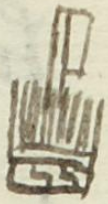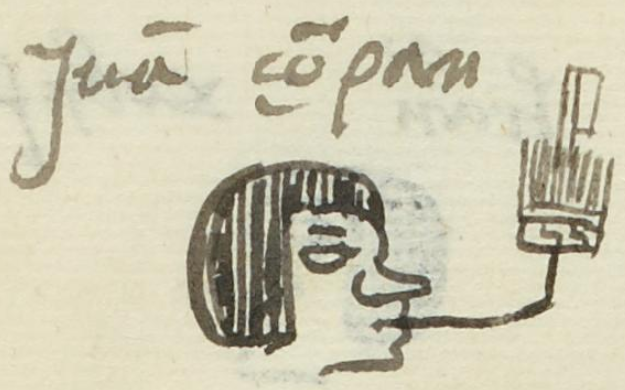Tzompan (MH652v)
This black-line drawing of the compound glyph for the personal name Tzompan ("Skull Rack") is attested here as a man's name. It shows the top half of a bundle that is used to represent the number 400 (tzontli) in codices, including a band with an emblematic pattern. Above that is a flag or banner (panitl), upright, rectangular, and facing toward the viewer's right. This is a fully phonographic compound that may have been used to disguise the fact that this name and concept is living on well after the establishment of Spanish colonialism. If so, this is an indirect effect, and it does not fully disguise the concept, given that the gloss is there (however, it was likely added by someone other than the artist).
Stephanie Wood
This compound glyph is fully phonetic given the tzom- (from tzontli) and the -pan (from panitl) combining to create a word with a very different meaning.
Stephanie Wood
juā çōpan
Juan Tzompan
Stephanie Wood
1560
Jeff Haskett-Wood
calaveras, palos, plataformas, banderas, nombres de hombres, tzompantli

tzompan(tli), skull rack or a tree, https://nahuatl.wired-humanities.org/content/tzompantli
pan(itl), flag, banner, https://nahuatl.wired-humanities.org/content/panitl
pam(itl), flag, banner, https://nahuatl.wired-humanities.org/content/pamitl
Estante de Cráneos
Stephanie Wood
Matrícula de Huexotzinco, folio 652v, World Digital Library, https://www.loc.gov/resource/gdcwdl.wdl_15282/?sp=387&st=image
This manuscript is hosted by the Library of Congress and the World Digital Library; used here with the Creative Commons, “Attribution-NonCommercial-ShareAlike 3.0 License” (CC-BY-NC-SAq 3.0).








